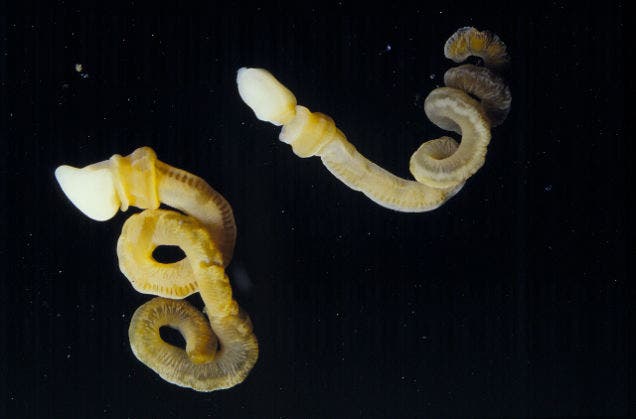One of the perks of being a writer for ZME Science is that I frequently get to feature some really amazing, yet bizarre creatures. Take for instance Ottoia prolifica (priapulid) or the penis-worm as it’s also known, for obvious reasons. This phallic creature actually had a throat full of teeth which it used to munch its meaty prey, and the weirdness doesn’t stop here. It could turn its mouth inside-out and use those teeth for traction to easily move about. Talk about double standards. Now, a team has systematically studied these ancient Cambrian fossils (520 million years old) to compile a dentistry handbook to distinguish between other penis worm species. This proved to be wise, since in their compiling work the researchers at University of Cambridge have already reported what they believe to be new Ottoia species.

“Taken together, our study has allowed us to compile a ‘dentist’s handbook’ that will help paleontologists recognize a range of early teeth preserved in the fossil record,” lead author Martin Smith of the University of Cambridge said in a statement.
“As teeth are the most hardy and resilient parts of animals, they are much more common as fossils than whole soft-bodied specimens,” he explained. “But when these teeth – which are only about a millimetre long – are found, they are easily misidentified as algal spores, rather than as parts of animals. Now that we understand the structure of these tiny fossils, we are much better placed to a wide suite of enigmatic fossils.”
The authors used high-resolution imaging techniques to identify the penis worm teeth from fossils like those found in the Burgess Shale, a geologic formation in the Canadian Rockies that contains fossils of a myriad of bizarre creatures dating from the Cambrian period. Findings were reported in the journal Paleontology.

Penis worms are still alive today, though they’re very hard to find since they only live in extreme environments. Check the video below for some penis worm action.
It’s easy to class the penis worm as somewhat uninteresting, scientifically-speaking, but another study published in 2012 proved this thinking wrong. Basically, a classification that orders animals in the tree of life is based on the order in which they develop a mouth and an anus as embryos. It follows that there are protostomes (from the Greek for ‘mouth first’), in which the mouth formed first, and the anus second, and deuterostomes (‘mouth second’) which describe animals where the mouth formed after the anus. Vertebrates, including humans, are deuterostomes, while invertebrates like jellyfish are protostomes. The penis worm used to be classed as a protostome as well, but researchers at University of Hawaii in Honolulu found that the priapulid Priapus caudatus (another penis worm) develops like a deuterostome. So, because of the penis worm, the way in which the largest branch of the animal tree of life has been defined now needs revision.


